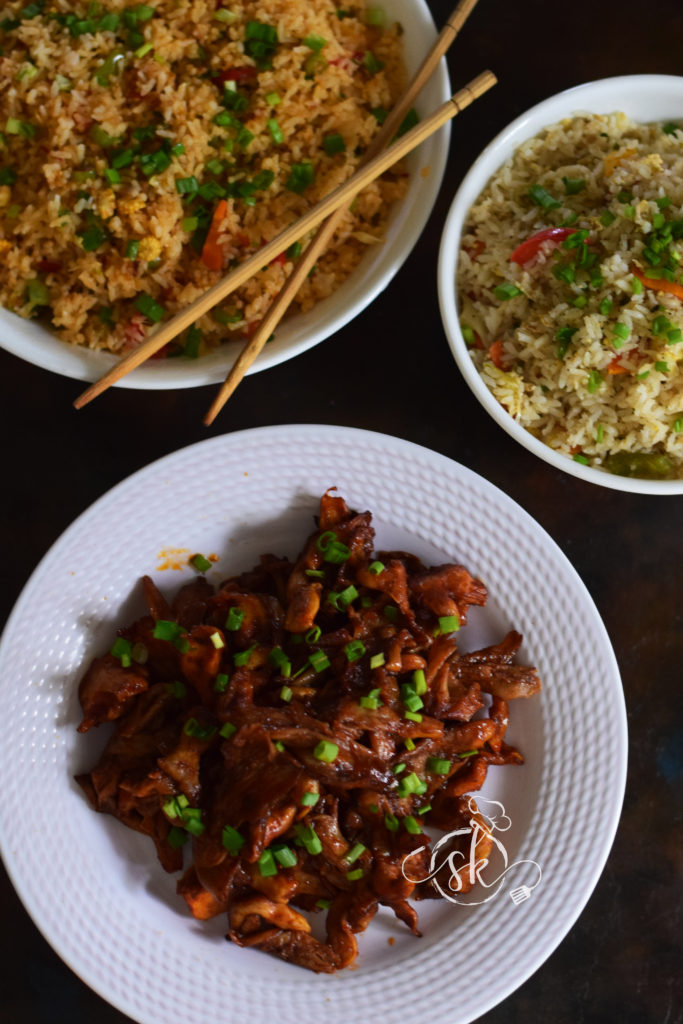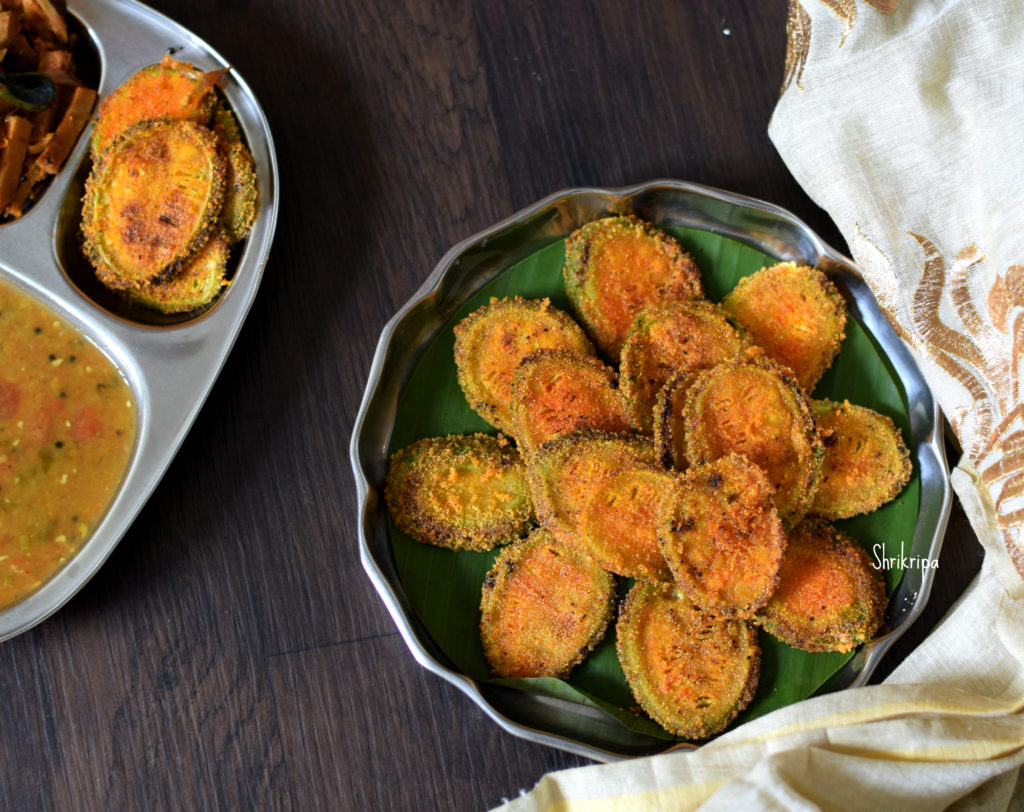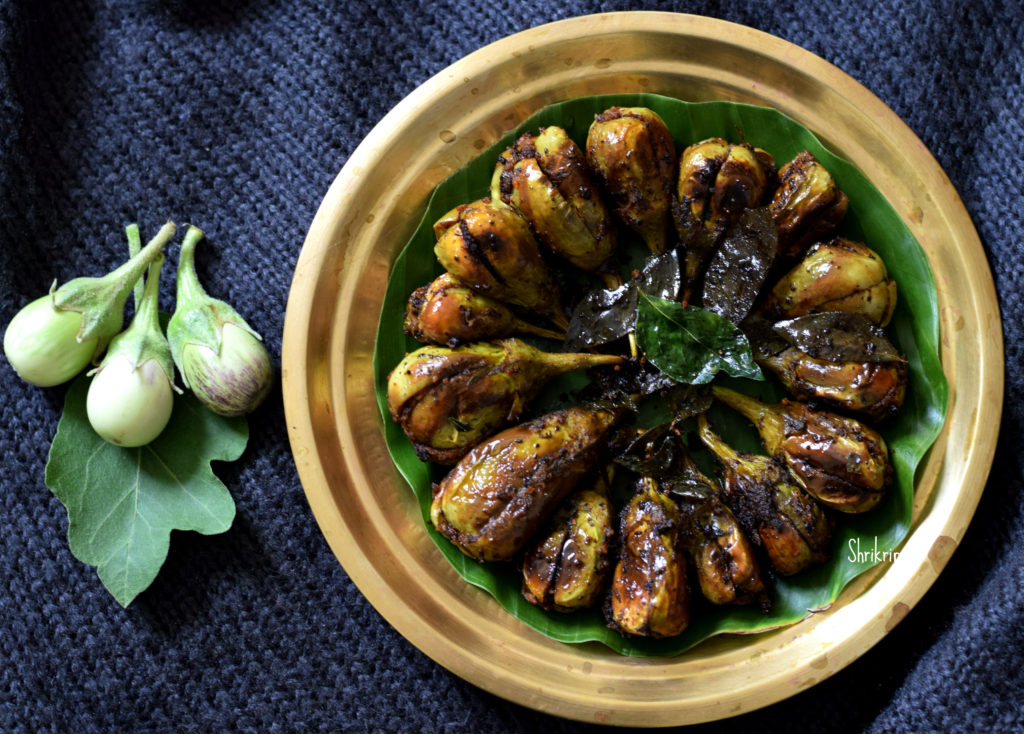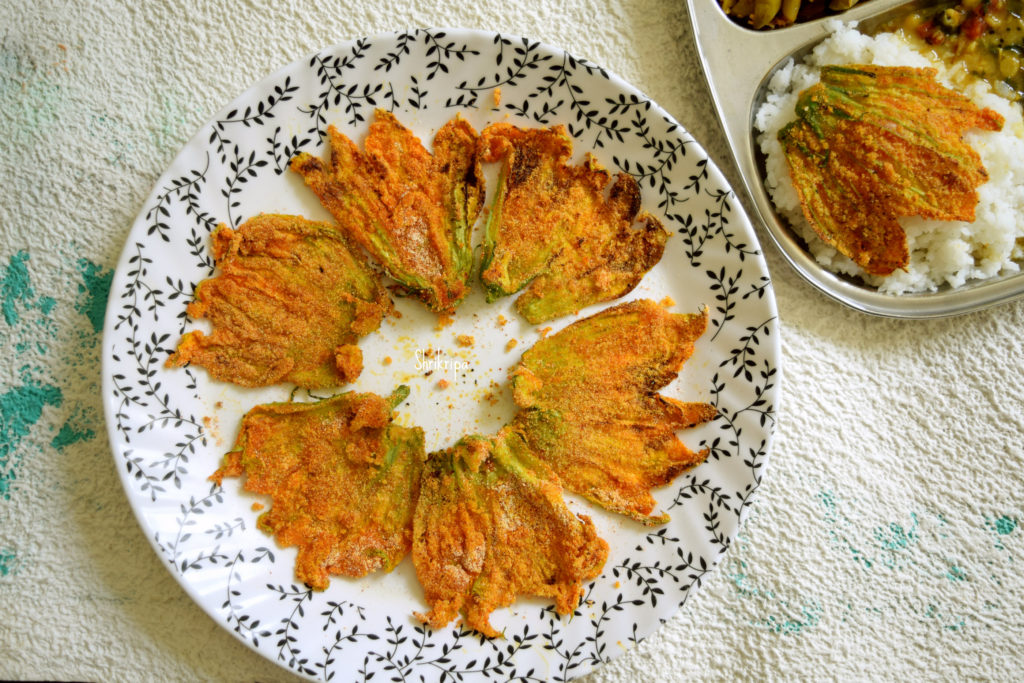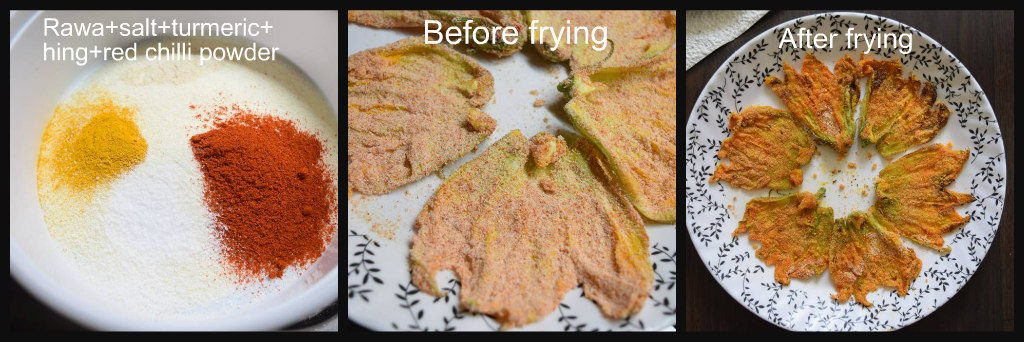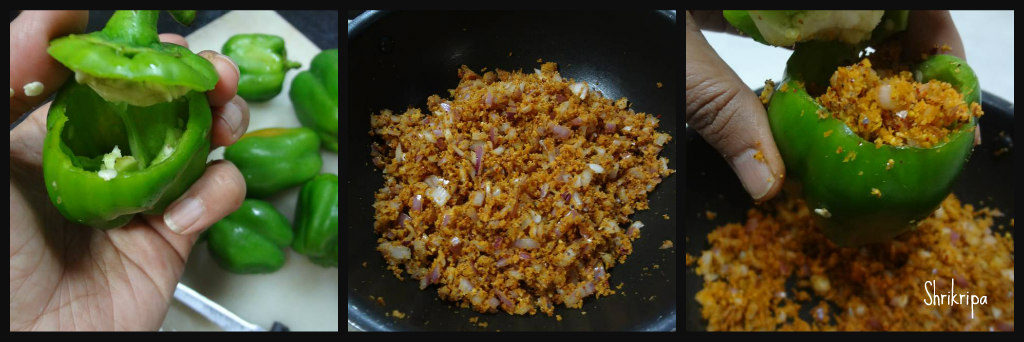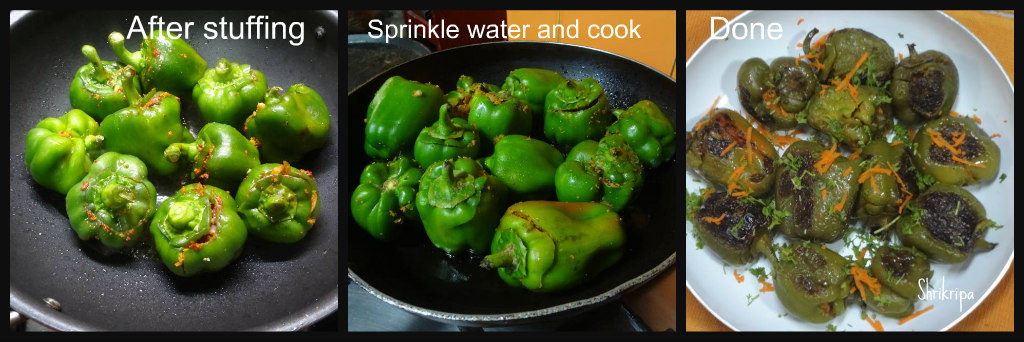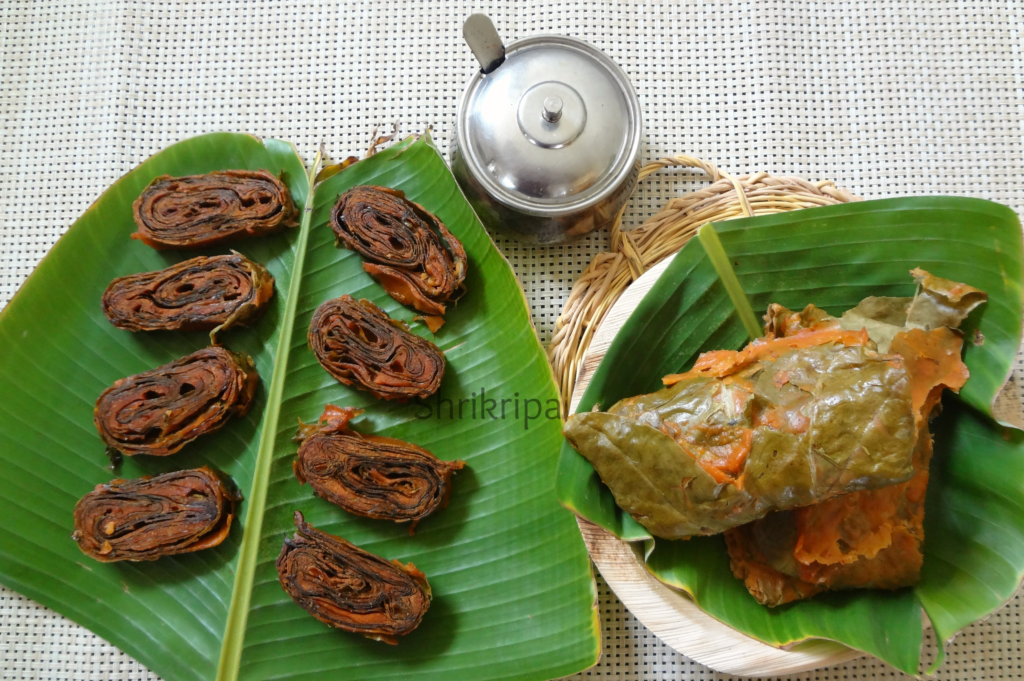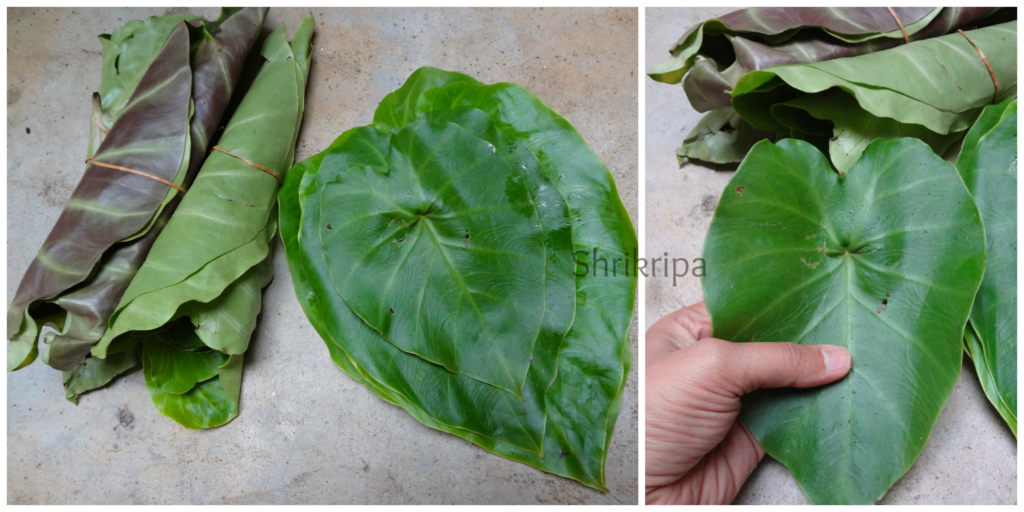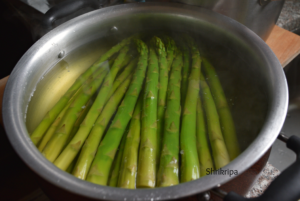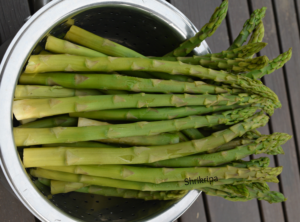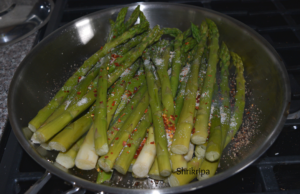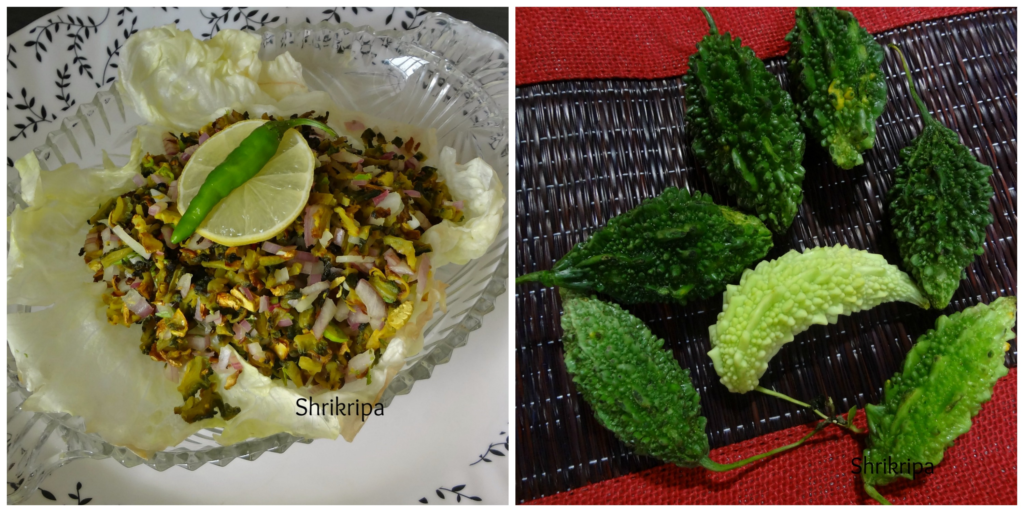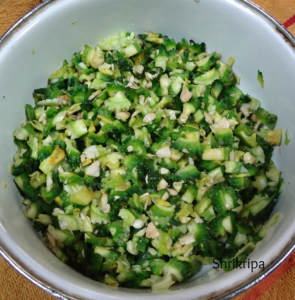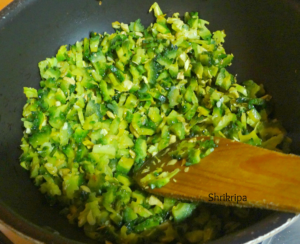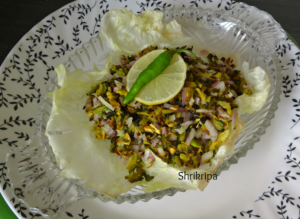A perfect side dish to enjoy with humble curd rice or Rasam rice. It is flavourful, healthy, and easy to make a side dish.
Now prepare the Taro root or Arbi; if you are new to the usage of Arbi, please go through my detailed description of handling Arbi, how to cook etc., in “Understanding the roots and tubers.” And go down until Tubers, and you would find the Taro/Arbi under Number 7, and it is HERE.

Now, the procedure for Arbi Fry:
Ingredients:
Arbi root – ¼ kg
Salt – as needed
Turmeric – ½ tsp
Red chilli powder – 1tsp
Tamarind powder or paste – ½ tsp
Coriander powder – ½ – 1 tsp
Hing – one pinch
Garam masala powder – ½ – 1 tsp
Curry leaves – 1 – 2 springs
Oil – 2 – 3 tablespoons
Rice flour – 1 to 2 tablespoons
Method:
-Wash the Arbi root, cook for one whistle in a pressure cooker. Peel the skin and slice it ( ½ inch thick pieces).
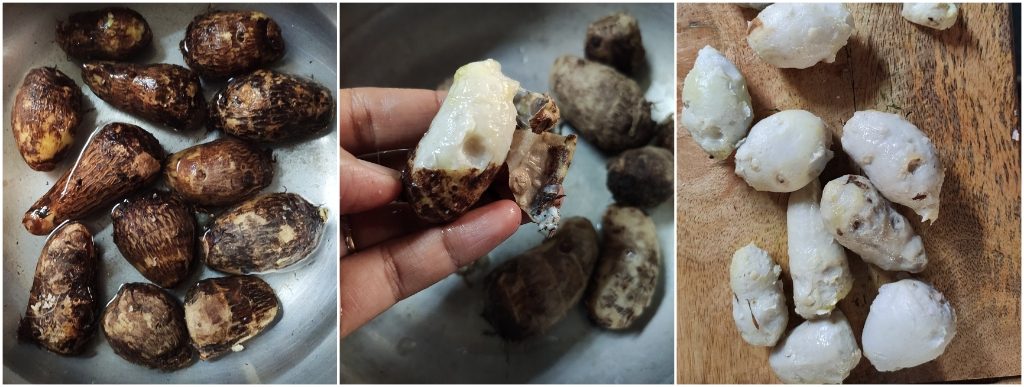
-Take one bowl, put these slices, all the masalas from salt to garam masala from the ingredient list. Let it sit for half an hour to 1 hour.
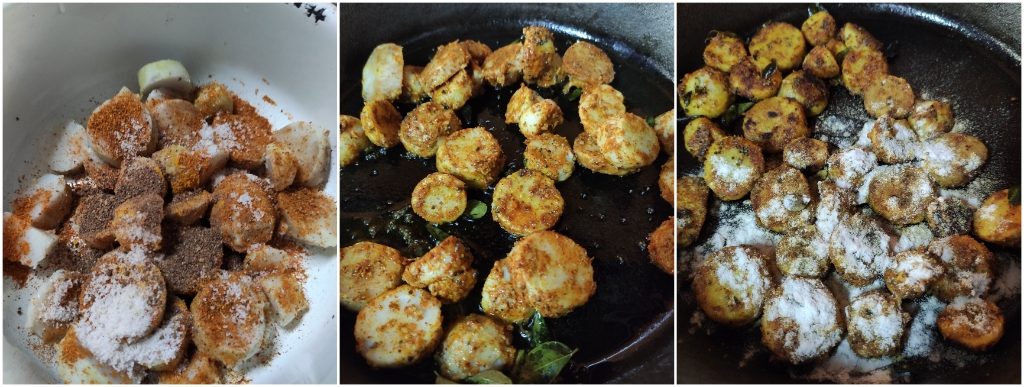
-Take one iron skillet, heat oil, put curry leaves, then marinate taro, toss-up and down in a slow flame.
When it is slightly crisp, sprinkle some rice flour and toss further and enjoy with your meal to make it crispier.
Tips: For example, while roasting Arbi, adding little rice flour when 3/4 is done gives it a crisp texture and does not get sticky and mushy. And the necessity to use excess oil also does not arise, thus making it healthier.

